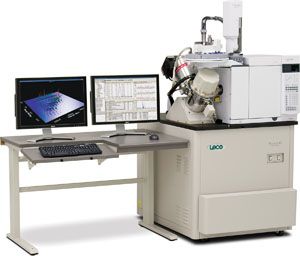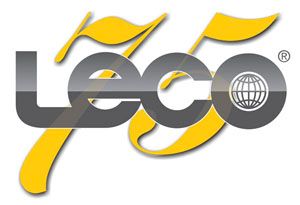Pegasus 4D GCxGC-TOFMS
LECO product profile

Variable Modulation Times (VMT) for Pegasus® 4D GCxGC-TOFMS optimisation is a unique feature designed and implemented by LECO. Traditional GCxGC uses a fixed modulation period and can result in an analytical compromise to the 1st dimension separation. The advantage of VMT enables the operator to specify at the click of a button their own and different modulation times throughout the GCxGC run time. Typically, applications taking advantage of GCxGC separations focus on matrix heavy &/or complex samples containing a broad range of analytes. In such complex mixtures, early eluting and more volatile analytes actually require shorter modulation times whilst later eluting analytes (high boilers) require much longer modulation times. Using the new LECO VMT programming style results in graduated Pegasus 4D® GCxGC-TOFMS chromatograms in the 2nd dimension and so preserves the valuable separation in the first dimension. This feature maximizes resolution in both the first and second dimensions and is compatible with LECO’s traditional LN2 and Consumable Free (CF) Pegasus 4D® GCxGC-TOFMS instruments.
The newly implemented features are built on a history of dedication and continuous development ensuring LECO continues to provide the gold standard of GCxGC instrumentation, the Pegasus 4D® GCxGC-TOFMS. For more information contact the LECO Separation Science team.
LECO European Technical Centre (ETC)
Marie-Bernays-Ring 31
41199 Mönchengladbach
Germany
Tel: +49 (0)2166 687 -104 or -107
Email: SepSci@leco.de
Web: www.leco.com

Fundamentals of Benchtop GC–MS Data Analysis and Terminology
April 5th 2025In this installment, we will review the fundamental terminology and data analysis principles in benchtop GC–MS. We will compare the three modes of analysis—full scan, extracted ion chromatograms, and selected ion monitoring—and see how each is used for quantitative and quantitative analysis.
Characterizing Plant Polysaccharides Using Size-Exclusion Chromatography
April 4th 2025With green chemistry becoming more standardized, Leena Pitkänen of Aalto University analyzed how useful size-exclusion chromatography (SEC) and asymmetric flow field-flow fractionation (AF4) could be in characterizing plant polysaccharides.
This information is supplementary to the article “Accelerating Monoclonal Antibody Quality Control: The Role of LC–MS in Upstream Bioprocessing”, which was published in the May 2025 issue of Current Trends in Mass Spectrometry.




